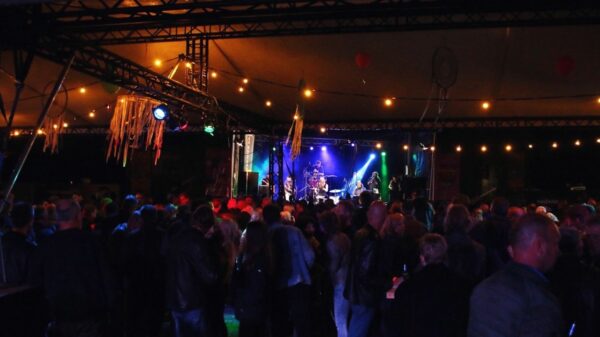In the closing moments of a year wherein the topics of fixed borders and immigration have dominated the world stage, Kehinde Wiley presents a collection of artwork that is strikingly pertinent. In his second exhibition at the Richard Friedman gallery, Wiley expands his horizons. Departing from his trademark styles, large seascapes are presented alongside a short artist film, ‘Narrenschiff’; both mediums chronicle the turbulent journeys of migrants and seafarers.
The exhibited works predominantly depict young, black males battling with or observing tumultuous oceans. Wiley breaks new ground in tackling seascapes, as opposed to his well-established portrait style. Inspired directly by 18th century romantic and classical allegorical painting styles- brooding clouds perch above crashing waves, distinct yet united in their cool, washed-out hues. Wiley’s attention to how light interacts with the contours of the body is retained, however. An instantly recognisable devotion to tonal contrast emerges in the complexions of his minuscule figures, deep browns and warm oranges eliciting a warmth from the solitary migrants. Chiaroscuro therefore becomes increasingly dramatic and concentrated as small bodily frames are dwarfed by large expanses of water.
Each piece mirrors the composition of a canonical western artwork. This is typical of Wiley’s concept, exploring Eurocentric portrayals of pride and success and attempting to view the faces of people of colour through a wider, canonical lens. The works therefore deal with more than just representation- appropriation of multigenerational artistic tropes force an artistic change in perspective.
In ‘The Herring Net’, differing colour palettes bifurcate the work, whilst the composition cultivates a sense of infinite scale. The piece is split into three planes, the fore dominated by the battered hulk of a ship, two figures illuminated in halo-esque light. Depth is an important factor in these seascapes. In ‘Ships on a Stormy Sea’, a horizontal depth draws out an expansive ocean littered by dark European galleons. A man desperately clings to his small boat in the foreground. The juxtaposition between vast imperial power and the less economically developed remote island nations is apparent. This discomfort is not shared in Wiley’s ‘Ship of Fools’, as the well-lit migrants laugh and joke in the midst of stormy, purpled waters. Inspired directly by Hieronymous Bosch’s painting of the same name, the allegorical themes of perceived stupidity and madness are shared. In two full-length and half-length portraits entitled ‘Fishermen Upon a Lee-shore, in Squally Weather’, pensive figures stare out to the sea; a natural border that divides culture and defines that which is alien, or mad. Madness, as a theme, culminates in these two pieces more so than any other.
The short film ‘Narrenschiff’ is equally as probing. Dark bodies wade through a milky ocean, eventually landing on shore. They calmly navigate the basking waters of their homeland. As the aerial camera moves with the subjects, the viewer looks down on the journeys of these men almost as a cartographer would a growing map. Men loading ships preparing for voyage are equated to ‘Ships of Fools’, mad men in search of reason. The trope used here stems from a concept born in the renaissance. Mad men and women were often depicted upon a ship voyaging through time, lost due to their madness. The film explores colonisation as a ‘purveyor’ of such psychiatric issues. ‘Curing the colonised subject’ of nationalism, local language/dialect and tradition was a practice undertaken by the Spanish and British empires. Narrated with extracts from Foucault and Fanon, the core message of the piece is engrained in history: European culture defines madness as that which it is not.
Within the collection, Kehinde Wiley ponders the effects of eurocentrism and the legacy of colonial thinking. The works themselves are vibrant and technically proficient. Wiley handles the brush more loosely when working with the moving ocean, more tightly when detailing the tonal intricacies of human skin. A sense of balance is thus retained in each piece, the power of nature and the psychological power of the subject working successfully in tandem.















